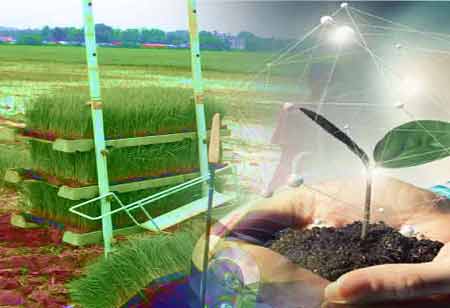Thank you for Subscribing to Agri Business Review Weekly Brief
How Adjusting the Planting Density with the Right Seed Rate Can Impact Harvest
The rate of seeding and the number of seeds sown per unit area have a major effect on crop yield and quality.

By
Agri Business Review | Tuesday, May 02, 2023
Stay ahead of the industry with exclusive feature stories on the top companies, expert insights and the latest news delivered straight to your inbox. Subscribe today.
Farmers who carefully consider the seed rate and planting density for their particular crop and growing conditions can achieve the best possible yields while maximizing efficiency and sustainability.
FREMONT, CA: The rate of seeding and the number of seeds sown per unit area have a major effect on crop yield and quality. The correct seed rate can aid in resource efficiency, yield maximisation, and crop health enhancement. Too few or too many seeds are planted, which can result in wasted space, lower yields, and a higher risk of pests and diseases. Because of this, it is crucial for farmers to carefully assess the right seed rate for their specific crop, growing environment, and farming methods. Farmers can choose the best planting methods for their crops if they are aware of the relationship between seed rate and harvest in this situation.
Adjusting the planting density with the right seed rate can have a significant impact on the harvest of field crops. Here are some ways in which this can happen:
1. Maximizing Yield: To increase yield, plant at the proper seed rate and density. While having too many plants can result in resource competition and decreased yield, having too few plants can result in wasted space and yield loss. Farmers may maximize the use of their land and produce the maximum potential harvests by striking the proper balance.
2. Consistency: The proper density of plants will enable them to grow regularly and uniformly. This may result in more equal ripening, simpler harvesting, and better crop quality.
3. Pest and Disease Management: The management of pests and diseases may be affected by changing the seed rate and density. Plants that are spaced too widely apart run the risk of becoming overtaken by weeds and losing their ability to compete with pests. On the other hand, planting too closely together might result in more humidity and less airflow, which can raise the risk of disease.
4. Resource Efficiency: Farmers may use resources like water, fertilizer, and pesticides more effectively by optimizing crop density. This can lessen the negative effects of farming on the environment in addition to saving money.
Seed rate helps to select the best sowing technique and plant species and varieties depending on their ability for germination, seed size, and growth pattern. The seed rate of various crops is influenced by several variables, such as the variety of the crop, the species of the crop, and the type of sowing technique. Preplanting a small plot of ground makes it possible to test for germination of the seed by measuring the seed size, germination rate, and soil moisture.
In the long run, changing the planting density while using the proper seed rate can significantly affect the crop. Farmers that thoughtfully examine the seed rate and planting density for their specific crop and growing conditions can maximize sustainability and efficiency while obtaining the highest yields.





